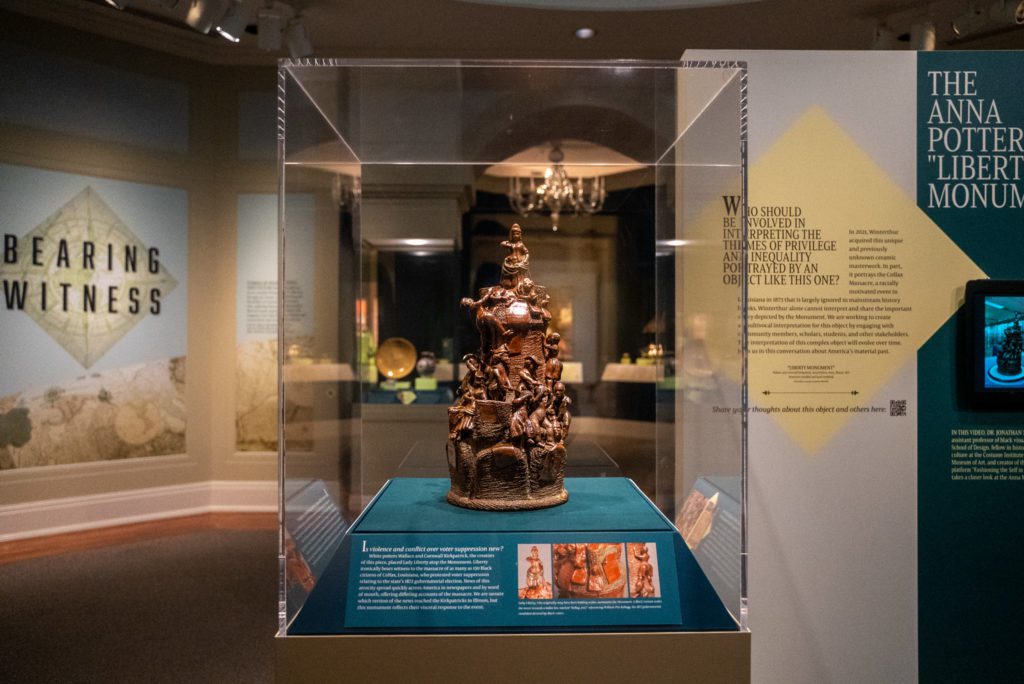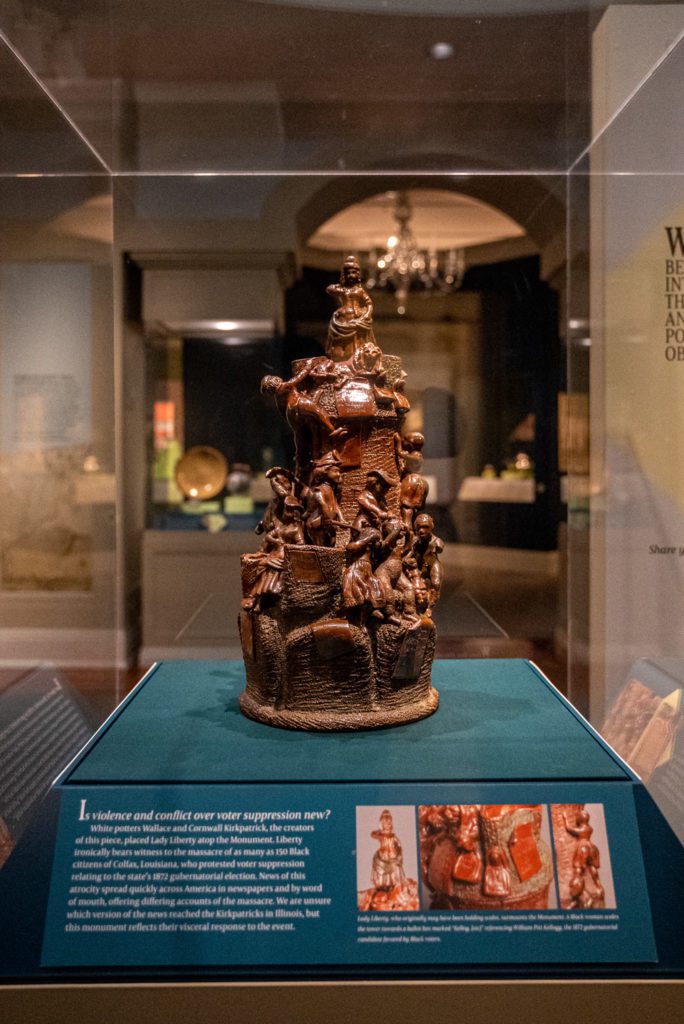A unique museum object represents a history of strong responses to complex issues.

A recent acquisition now displayed in the Winterthur galleries asks viewers to consider this question:
Are violence and conflict over voter suppression new?
Now part of the Bearing Witness installation, the nearly 150-year-old Anna Pottery Liberty Monument vividly depicts its creators’ scathing criticisms of an incident known as the Colfax massacre. On Easter Sunday 1873, a white mob killed approximately 150 Black citizens of Colfax, Louisiana, as they surrendered after occupying the county courthouse. The Black citizens were defending the result of the 1872 gubernatorial election against an outraged White mob. The election was won by a proponent of recently guaranteed civil rights and voting rights for all.
The Liberty Monument was created by Wallace and Cornwall Kirkpatrick, the white owners of Anna Pottery in Anna, Illinois, from 1859 to 1896. Known to be socially progressive, the brothers were vocal about their views and often commented caustically on events and politics through their work.
The figure of Lady Liberty crowning the monument gives the work its contemporary name. Though the main scene depicted on the monument is the Colfax massacre, other figures represent the Kirkpatricks’ strong view of another Colfax: Schuyler Colfax, who, while vice president of the United States (1869–1873), was implicated in a scandal related to the financing of the Transcontinental Railroad. The monument also criticizes the great cost of the American Civil War, which the Kirkpatricks viewed as theatrical and ineffective in creating a United States in which all were truly free. Though sympathetic to the plight of Black people, the brothers depicted them through common racial stereotypes of the day.

Various accounts of the Colfax massacre were published in newspapers across the country. None of them are definitive. Considered by some to be the worst incident of racial violence in the Reconstruction era, Colfax nonetheless has been largely ignored by mainstream history books.
“The unique Liberty Monument demonstrates unusual skill on the parts of the makers, who typically produced useful wares such as crocks. Much more importantly, it illustrates how vital messages regarding social issues were disseminated via methods beyond the written word and published illustrations,” says Leslie B. Grigsby, senior curator of Ceramics and Glass at Winterthur.
Winterthur acquired the Liberty Monument during the summer 2021 Crocker Farm auction of American stoneware and earthenware. The auction house described the commemorative work as “one of the greatest American ceramic discoveries to come to light in recent decades.”
Grigsby and Alexandra Deutsch, John L. and Marjorie P. McGraw Director of Collections at Winterthur, are working to create a multivocal interpretation for the object by engaging with scholars, students, and others to depict the multilayered history the monument represents.
“We expect the interpretation of this complex object to evolve over time,” Deutsch says. “We fully understand the responsibility we have when we present the challenging history this object represents.”
See the Anna Pottery Liberty Monument (2021.0017) in the galleries as part of Bearing Witness, which considers the stories of underrepresented groups through history.